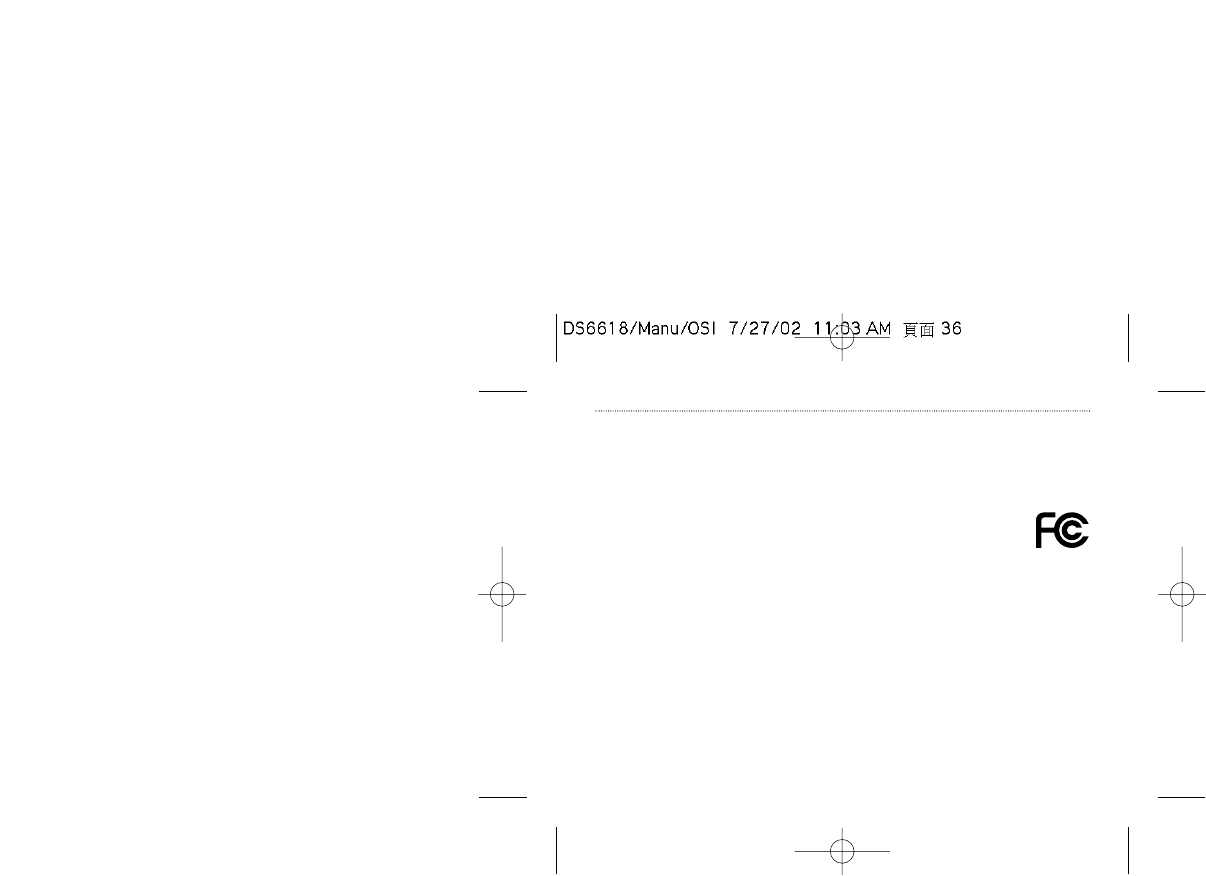
36
CARE
Keep the camera dry; if it gets wet, wipe it dry immediately. Use and store the camera only in normal temperature
environments. Handle the camera carefully; do not drop it. Keep the camera away from dust and dirt, and wipe it with
a damp cloth occasionally to keep it looking new.
If your camera is not performing as it should, take it to your local Oregon Scientific store for assistance. Modifying or
tampering with the camera's internal components can cause a malfunction and might invalidate its warranty and void
your FCC authorization to operate it.
The FCC Wants You to Know
This equipment has been tested and found to comply with the limits for a Class B digital device, pursuant to Part 15
of the FCC Rules. These limits are designed to provide reasonable protection against harmful interference in a
residential installation. This equipment generates, uses and can radiate radio frequency energy and, if not installed
and used in accordance with the instructions, may cause harmful interference to radio communications.
However, there is no guarantee that interference will not occur in a particular installation. If this equipment does
cause harmful interference to radio or television reception, which can be determined by turning the equipment off and
on, the user is encouraged to try to correct the interference by one or more of the following measures:
• Reorient or relocate the receiving antenna.
• Increase the separation between the equipment and receiver.
• Connect the equipment into an outlet on a circuit different from that to which the receiver is connected.
• Consult your local Oregon Scientific store or an experienced radio/TV technician for help.
If you cannot eliminate the interference, the FCC requires that you stop using your camera.
Changes or modifications not expressly approved by Oregon Scientific may cause interference and void the user's
authority to operate the equipment.
FCC Declaration of Conformity
This device complies with Part 15 of the FCC Rules. Operation is subject to the following two
conditions: (1) this device may not cause harmful interference, and (2) this device must accept any
interference received, including interference that may cause undesired operation.


















